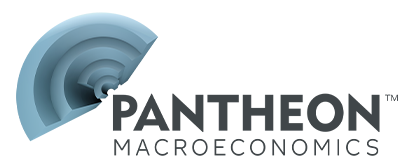- © 2025 Pantheon Macroeconomics
- Tel: +1 914 610 3830
Pantheon Macroeconomics
Best viewed on a device with a bigger screen...
Below is a list of our US Publications for the last 5 months. If you are looking for reports older than 5 months please email info@pantheonmacro.com, or contact your account rep
Please use the filters on the right to search for a specific date or topic.
Global Daily Monitor Datanotes
Lackluster, but not alarming enough for a January easing.
The dots imply three regional Fed presidents who will
vote in 2026 disagreed with this meeting’s easing...
...But we reckon all the permanent voters expect to
ease in 2026; labor data will trigger March action.
Year-over-year growth in the ECI was stable at 3.6%
in Q3, but leading indicators signal a sharp fall soon.
Soft September sets for stage for more consumer weakness in Q4.
Core PCE inflation set to undershoot the FOMC’s forecast in Q4.
Payrolls flattered by the seasonals; rising unemployment keeps a December easing in play.

U.S. Document Vault, independent macro research, Pantheon Macro, Pantheon Macroeconomics, independent research, ian shepherdson, economic intelligence,